Campbellclanman
Platinum Member
- Joined
- Mar 10, 2007
- Messages
- 15,820
What an old Beauty Glenn 
The BladeForums.com 2024 Traditional Knife is available! Price is $250 ea (shipped within CONUS).
Order here: https://www.bladeforums.com/help/2024-traditional/
Wonderful find GlennI don't think I've shared this one here before. Can't quite make out the name, maybe Jack or another brother across the pond can help with the maker.
It's not a museum piece, but nice enough I guess. It does need some work, the center pin is sheared in the middle...those blades have no snap, but the other ones on either side do, LOL.
View attachment 2789945
View attachment 2789947


William Harmar & Co:
William Harmar & Company
<p>Born in Sheffield in about 1828, William Harmar was listed as an American merchant in West Street in 1868. Besides spending periods in New York (whe...www.hawleysheffieldknives.com
Excellent! Thank you for that bit of detective work. Now I have a name to go with the knife.
That's a great old survivor. While that is not a common knife to find, it was actually a popular model sold in the United States in the late 1800s.I don't think I've shared this one here before. Can't quite make out the name, maybe Jack or another brother across the pond can help with the maker.
It's not a museum piece, but nice enough I guess. It does need some work, the center pin is sheared in the middle...those blades have no snap, but the other ones on either side do, LOL.
View attachment 2789945
View attachment 2789947
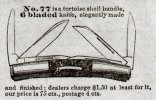
Harrison Bros. & Howsen, Sheffield. 3 5/8in Smooth Black Horn c.1870-1880's.
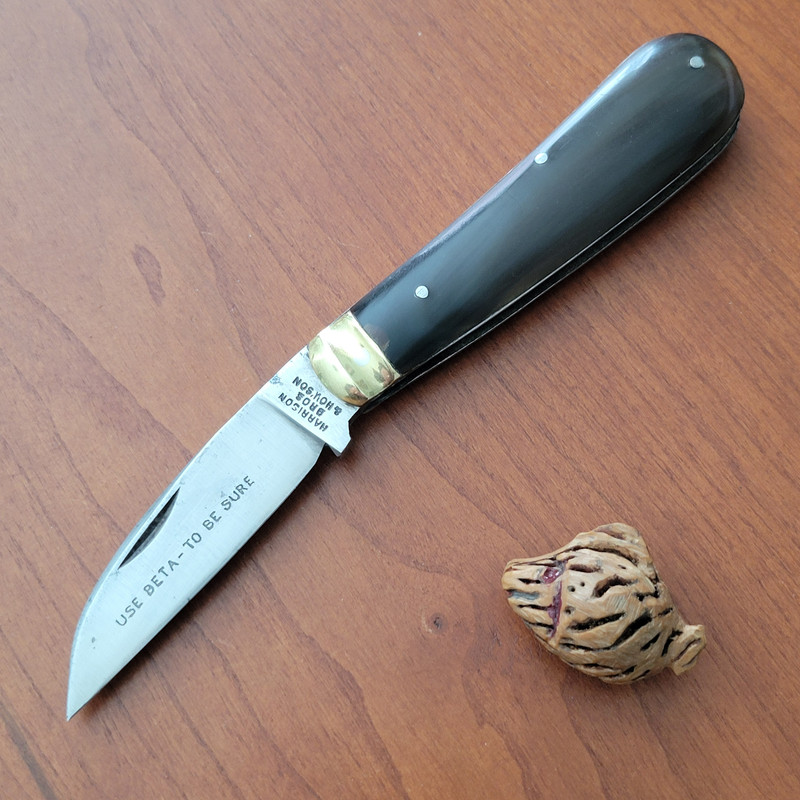
Thanks for the clarification Neal. It was cataloged as 1870-80's when it was purchased.That's a nice example, but it's about a century newer than you had stated.
This model was produced after 1959 when Viners acquired the Harrison Bros. & Howson company.
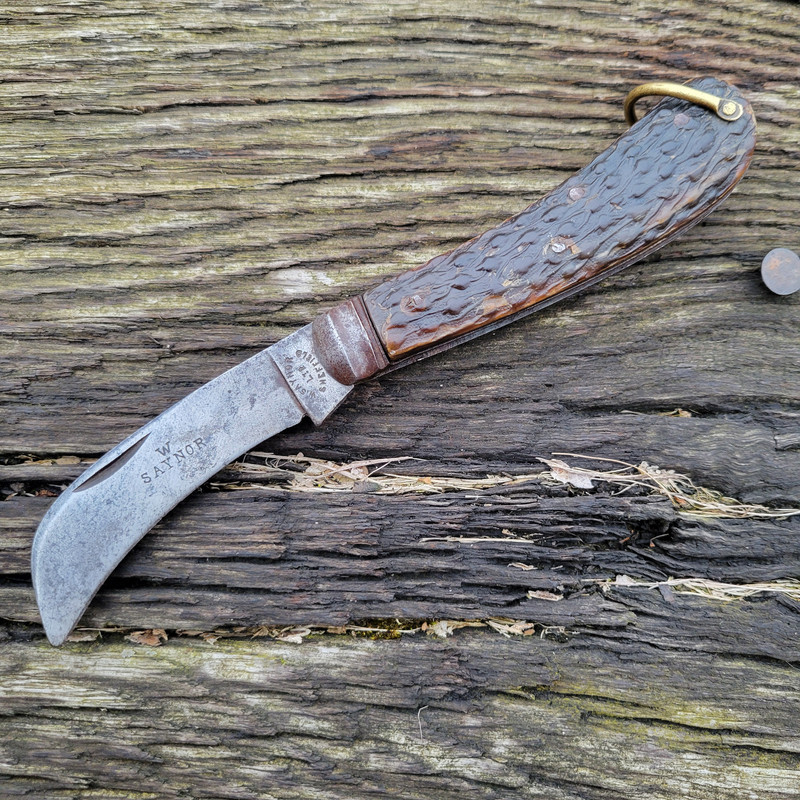
W. Saynor Sheffield, Pressed Horn Popcorn Stag Hawkbill.

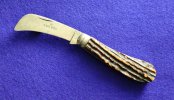
More astounding treasure. The Horn on the Swayback is extraordinary , what is that pattern 3rd down please with the long Spear? Anglo-Saxon? As for the Barehead Spear with Rat-Tail and Stag, this is what this thread should be about, Golden indeed.
Early on in the thread some contributors mooted the possibility of a different race of Stag for the exemplary Antler of the age. Parallel with the specialist skills in hafting and bending. Select Deer Parks in India whose inhabitants may have vanished leaving no descendants with the same antler traits. Chital Deer were mentioned together with Sambar & Scottish Red Deer. Somebody noted that some of it is close together in bark texture, which Bonestag tried to emulate, quite unlike Grooved or Popcorn -beautiful as they are. Possibly the origins of Pressed Stag?
View attachment 2781441
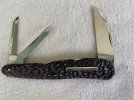
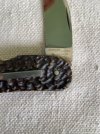
What a small world. I have that exact Cold Finger EO and 5 other Lockwoods from this display. The board is pictured on page 196 in The Heritage of English Knives.
Here's a picture of the EO I took a while back. I'll post a group picture of the lot tonight if I'm home before dark.
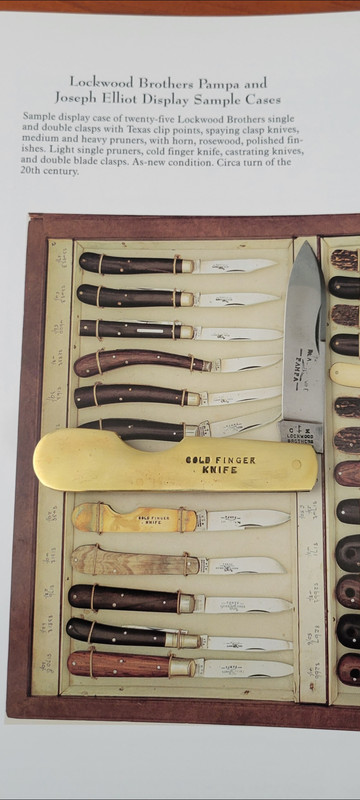
Just a teaser pic.
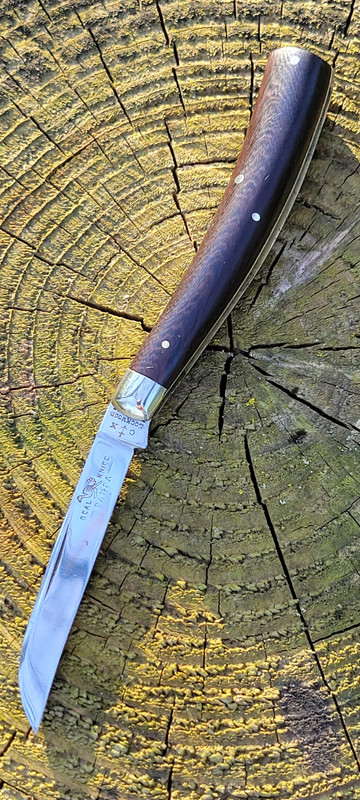
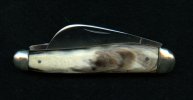
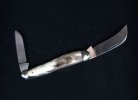
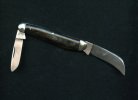
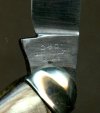
That's a great example and certainly unusual with two uncommon features for an English pruning knife.
First, very interesting to see pressed horn on that model which gives it quite a unique look.
Second, also quite unusual to see a bail on a Sheffield pruner. It certainly looks like a factory addition which many English companies would do for a small charge.
Saynor models were a standard in the horticulture world both in Europe and the U.S.
Here is one of my favorites with wonderful old stag.
View attachment 2803214
What an outstanding knife Lyle. I would have loved to see English Knives keep the same presence today as they did through out the golden age. Immigration, the war, and changing technology was ultimately it's demise.A Joseph Elliot that Hayden-Wright didn't have in his collection, but from a board or salesman sample. I miss British Blades , which is now defunct , those contributors had first hand accounts and intimate knowledge of cutlery there. I'm just thankful we have Jack.
This may be the understatement of the year.Here is one of my favorites with wonderful old stag.


What an outstanding knife Lyle. I would have loved to see English Knives keep the same presence today as they did through out the golden age. Immigration, the war, and changing technology was ultimately it's demise.
Here's a interesting read from an interview of Mrs Buckingham, who worked at the American Shear & Knife Co. It's shows that some knife makers from Sheffield made it to the states, and continued their craft. I'm sure there were quite a few working for American makers during this time.

She worked in a Connecticut knife factory from 1888 to 1914
During the Depression folks were hired to travel the Country documenting American Life as part of the Federal Writers’ Project. These interviews are now in the Library of Congress. The follow…cutlerynewsjournal.wordpress.com
This may be the understatement of the year.
What an outstanding knife Lyle. I would have loved to see English Knives keep the same presence today as they did through out the golden age. Immigration, the war, and changing technology was ultimately it's demise.
Here's a interesting read from an interview of Mrs Buckingham, who worked at the American Shear & Knife Co. It's shows that some knife makers from Sheffield made it to the states, and continued their craft. I'm sure there were quite a few working for American makers during this time.

She worked in a Connecticut knife factory from 1888 to 1914
During the Depression folks were hired to travel the Country documenting American Life as part of the Federal Writers’ Project. These interviews are now in the Library of Congress. The follow…cutlerynewsjournal.wordpress.com
